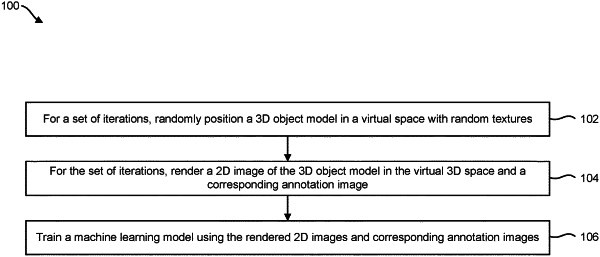| CPC G06N 20/00 (2019.01) [G06T 7/20 (2013.01); G06T 7/75 (2017.01); G06T 11/00 (2013.01); G06V 20/647 (2022.01); G06V 20/653 (2022.01); G06T 2200/04 (2013.01); G06T 2207/20081 (2013.01)] | 15 Claims |

|
1. A method, comprising:
for a set of iterations, randomly positioning a three-dimensional (3D) object model in a virtual space having randomly selected textures;
for the set of iterations, rendering a two-dimensional (2D) image of the 3D object model in the virtual space and a corresponding annotation image; and
training a machine learning model using the rendered 2D images and corresponding annotation images.
|